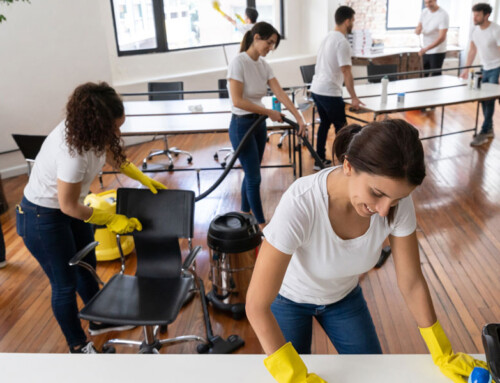How a $20,000 Mistake Led to an Industry Certification
When we started our cleaning business 32 years ago, we had our mop, our vacuum, a few rags, some cleaning agents, and voila! We were in business. Really, how complicated could cleaning be? In those start-up days, nearly all of what we were cleaning was pretty bulletproof: vinyl, ceramic, porcelain, etc. You had to work hard to mess those up.
Then one day, we cleaned a house with a marble floor. We thought we used a safe, neutral chemical, but we burned the floor. Twenty thousand dollars later, we said, “We need to know what we are doing!” In those days, there was no Association of Residential Cleaning Services International (ARCSI), now known as ISSA Residential. There was no certification and little to no training for residential cleaners. We took what training there was, often through the Institute for Inspection, Cleaning, and Restoration Certification (IICRC), and we kept learning the hard way by trial and error. Unfortunately, we made a lot of mistakes—a few of them minor, some major.
Shortly after its formation, ARCSI saw the need for a professional certification that was more robust than one person’s ideas. They approached the IICRC to develop one. Next came a four-year effort involving not only house cleaners, but also input from equipment manufacturers, microbiologists, and flooring manufacturers, among others. Finally, in 2011 the materials and knowledge for the certification were documented and approved, and the official House Cleaning Technician (HCT) Training and Certification was held in 2012. Now the residential cleaning industry had a certification and training course that covered all of the commonly known surfaces in a home, as well as health and safety for both cleaners and customers.
New materials, new risks
As I have already said, in the early days, it was hard to mess up the surfaces in standard homes. Today, homes have many more surfaces, many of which require special care. Stone, oiled hardwoods, cork, bamboo, laminate, and all the alphabet soup of the new flooring types: LVT, LVP, SPC, etc. Many of these floors require special treatment and can be costly traps for the unwary cleaner.
In addition, new products often come on the market with great promise, only for users to find (after a year or two in service) that more or different care was needed than originally thought. That is why I attend the SURFACES trade show annually and speak with manufacturers and flooring inspectors to discover what is happening now, what’s new, and the results of field experience.
Half of the warranty claims are maintenance issues
A couple of years ago, I was talking to one flooring inspector who had overseen $85 million in claims. One of her colleagues had managed $125 million in claims. Shockingly, both related that half of their damage claims proved to be the result of improper maintenance. The manufacturers are letting it be known that when the problem is improper care, they are not responsible.
As one person told the inspectors, “Talk to your maid.” A growing number of manufacturers are giving significantly more extended warranties on their products, but they are not covering damage resulting from improper cleaning. That is our job as residential cleaning professionals to prevent this. Many products are advertised as safe and effective on everything, but they seldom are. For example, steam mop advertisements show their use in cleaning every hard surface flooring type in the house, but they can actually damage many surfaces, especially with repeated use.
So how do we know what is safe? You can continue to make many mistakes, talk to manufacturers and hopefully make fewer mistakes, or get the training you need to protect your business.
Learn from others’ mistakes
The House Cleaning Technician (HCT) Training and Certification is the best way to learn what you need to know—the science behind cleaning. It is also the cheapest way. When I teach a class, students often ask how I know so much. I say, “That’s easy—I have made so many mistakes.”
So, with the HCT Training and Certification, you have the advantage of my 32 years of mistakes, plus issues that have been brought to me by students, as well as issues the manufacturers have discovered. Having this background can not only keep you from making mistakes but help you defend yourself when problems are not your fault. If we had had this available to us when we started, we would have been years ahead and saved thousands of dollars on damage repairs, not to mention lost customers from improper cleaning.
When you complete your HCT Training and Certification, you will have the information and confidence to be more of a consultant to your clients on caring for their homes and cleaning for their health. With this collaboration between ISSA and the IICRC, we have taken a big step towards professionalizing the residential cleaning industry.
Find out more about the House Cleaning Technician (HCT) Training & Certification at residential.issa.com/hct.

















